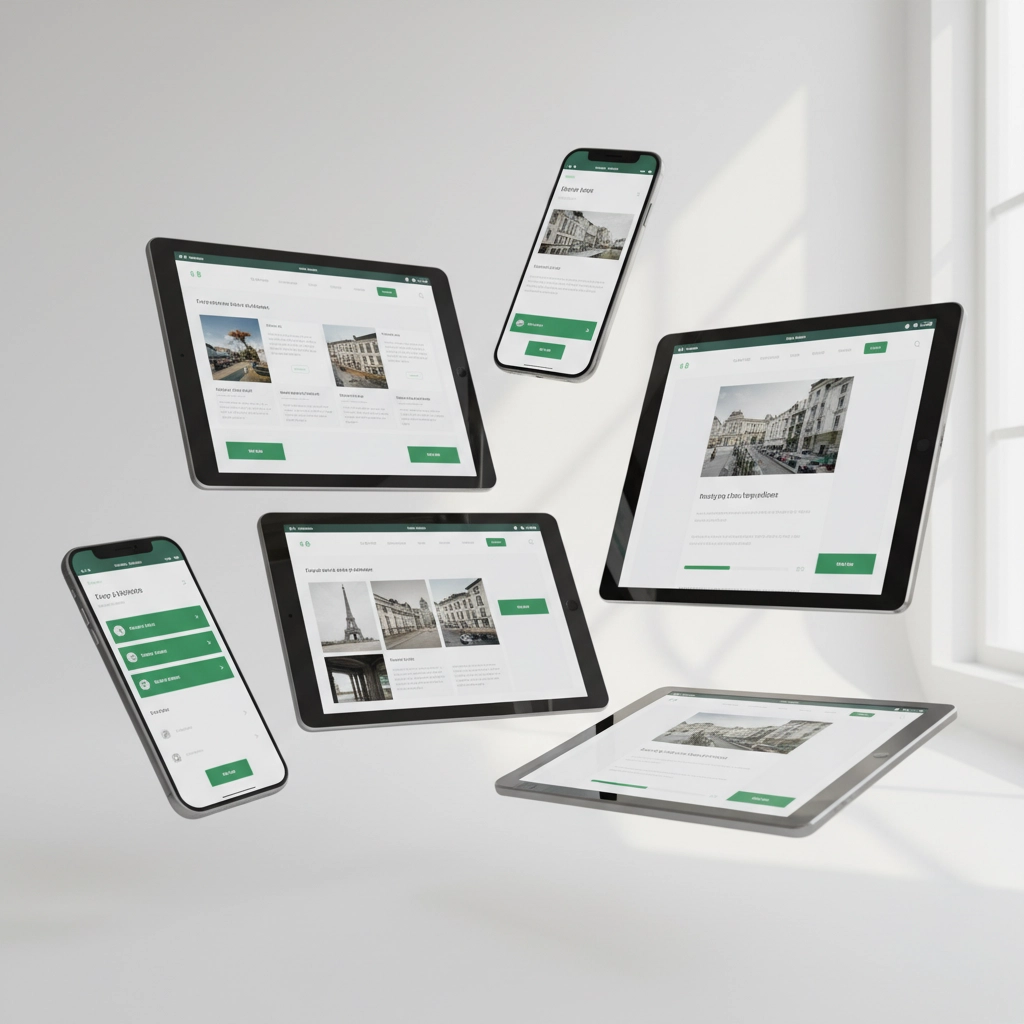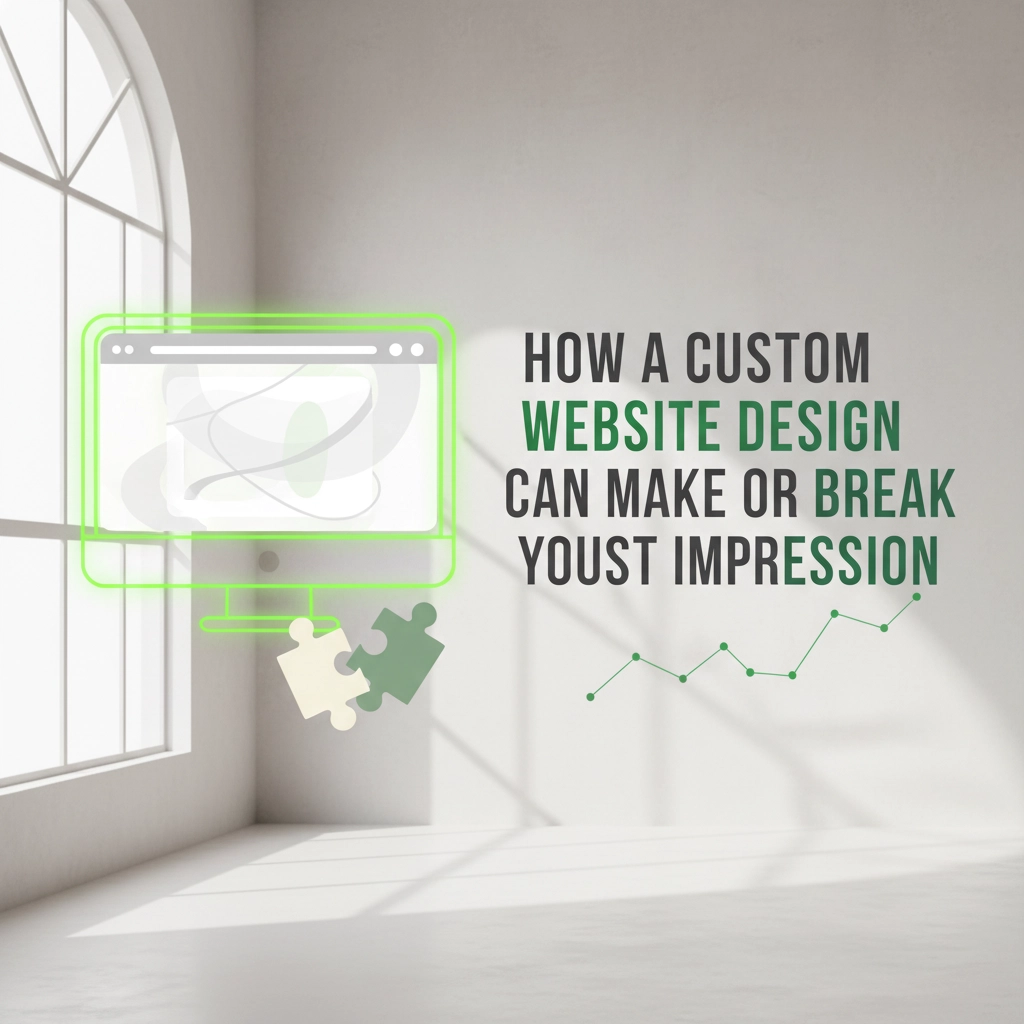Most business owners think their website just needs to look "good enough"… until they discover that 94% of first impressions are purely design-related, and visitors are making split-second judgments that can make or break their entire business relationship.
Here's the thing that'll blow your mind: your potential customers are deciding whether to trust you, buy from you, or even stay on your site in just 50 milliseconds. That's faster than you can blink, faster than you can say "welcome to our website," and definitely faster than they can read your carefully crafted value proposition.
The Lightning-Fast Psychology of Digital First Impressions
We live in an age where attention spans are shorter than a TikTok video, and your website is often the very first touchpoint between your brand and potential customers. Think about your own browsing habits: when you land on a website, you instantly know whether it feels legit or sketchy, professional or amateur, trustworthy or questionable.
This isn't some mystical intuition. It's pure psychology at work. Stanford research shows that 75% of people judge an organization's credibility based solely on its website design. Not the products, not the testimonials, not the years of experience: just the visual design they see in those first few seconds.

The phenomenon happens through two powerful cognitive biases working against (or for) you:
The Halo Effect means when someone sees a polished, professional design, they automatically assume your entire business operation is equally impressive. Your customer service must be great, your products must be high-quality, your company must be successful. It's like a psychological shortcut that works in your favor: when done right.
Anchoring Bias is even more brutal. Whatever impression your visitors form first becomes the anchor for everything else they experience on your site. If that first impression is negative, they'll interpret everything through that lens. Even your best content and strongest offers will be viewed with suspicion.
The Design Elements That Actually Matter
Let's cut through the design fluff and focus on what really moves the needle when someone lands on your site.
Visual Coherence and Brand Consistency
Your website needs to feel like it belongs to your brand from the second someone arrives. This isn't about having the fanciest graphics or the most cutting-edge animations. It's about creating a cohesive visual experience that instantly communicates who you are and what you stand for.
Color psychology plays a massive role here. The colors you choose aren't just aesthetic decisions: they're emotional triggers that can make visitors feel excited, calm, confident, or anxious within milliseconds. When ChaseDaddy.com uses that signature green in our design elements, it's not random: it's intentionally chosen to convey growth, innovation, and trustworthiness.
Typography is equally critical. The fonts you choose communicate personality before anyone reads a single word. Clean, modern fonts suggest professionalism and reliability, while outdated or poorly paired fonts immediately signal that your business might not be current or detail-oriented.
Navigation That Actually Makes Sense
Here's where a lot of websites completely bomb: navigation that requires a PhD to figure out. Your visitors shouldn't need to hunt for basic information or guess where to find what they need. The menu structure should be so intuitive that using it feels natural and effortless.
Think about navigation as the roadmap to your business. If someone can't quickly understand how to explore your services, learn about your company, or contact you, they'll bounce faster than you can track the analytics.

Content Clarity That Answers the Big Questions
Within 3-5 seconds of landing on your homepage, visitors need crystal-clear answers to two fundamental questions:
- What do you do?
- Why should I care?
This isn't the place for clever wordplay or mysterious messaging. People's time is valuable, and if they have to work to understand your business, they won't. Your value proposition needs to be immediately obvious, even to someone who's never heard of your industry.
Speed and Mobile Optimization
In 2025, a website that loads slowly or looks broken on mobile devices is basically business suicide. Your potential customers are browsing on phones during coffee breaks, tablets while traveling, and expecting everything to work perfectly regardless of their device.
Site speed affects not just user experience but also search engine rankings. Google literally penalizes slow websites, which means poor performance costs you visibility and potential customers before they even have a chance to see your content.
The Business Impact: When First Impressions Go Wrong
The statistics around bad first impressions are honestly pretty terrifying for business owners. 88% of online consumers are less likely to return to a website after a bad experience. Think about that: you literally get one shot to make a good impression, and if you blow it, there's almost no second chance.
This isn't just about losing one potential customer. In our hyper-connected world, bad experiences get shared. People screenshot poorly designed websites, share them in Slack channels, and use them as examples of what not to do. Your first impression failure can become someone else's cautionary tale.

On the flip side, when you nail that first impression, the results are powerful. Users who have a positive initial experience are more likely to:
- Spend more time exploring your site
- Trust your brand and recommendations
- Convert into paying customers
- Return for future purchases
- Recommend you to others
The Custom Design Advantage
Here's where custom website design separates winners from wannabes. Template-based websites might look decent, but they don't capture the unique essence of your brand. They're the equivalent of wearing a generic suit to an important meeting: it might technically be appropriate, but it doesn't make you memorable or distinctive.
Custom design means every element is intentionally crafted to support your business goals and reflect your brand personality. The layout, colors, imagery, and user flow are all designed specifically for your audience and your objectives.
At ChaseDaddy.com, we've seen businesses transform their results simply by investing in professional custom design. The same company, same services, same pricing: but suddenly they're attracting higher-quality leads and closing more deals because their website finally matches the quality of their work.
Making Your First Impression Count
The reality is that your website is working 24/7 as your digital sales representative. It's making first impressions, answering questions, building trust, and either converting visitors into customers or sending them to your competitors.
Every day you delay investing in professional design is another day of lost opportunities. Every visitor who bounces because your site looks outdated or unprofessional represents revenue that went to someone else: probably a competitor who understood the importance of making great first impressions.

Your business deserves a website that matches the quality of your work and the professionalism of your team. In those critical 50 milliseconds when someone first sees your site, you want them thinking "this is exactly the kind of company I want to work with," not "maybe I should keep looking."
The question isn't whether first impressions matter: the research proves they absolutely do. The question is whether you're going to let your website make the right first impression for your business.
If you're ready to stop losing potential customers to poor first impressions and start converting more visitors into clients, it might be time to explore what custom design can do for your business. Check out our services to see how we help businesses create websites that make powerful first impressions and drive real results.
Because in a world where you have 50 milliseconds to make an impression, every detail matters.

